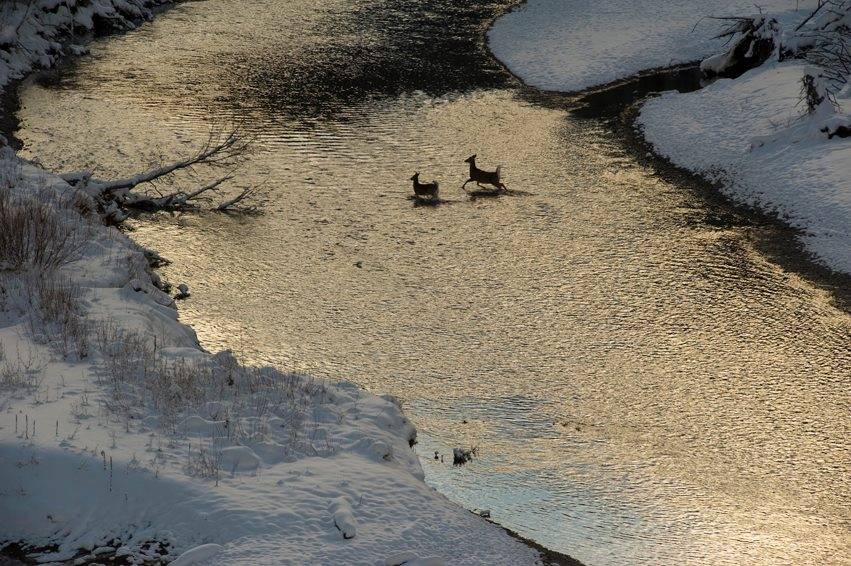By Lauren Hendricks
These are just a few of the hundreds of species of wildlife—mammals, birds, amphibians, reptiles, fish, and insects—that live along the Continental Divide Trail. If you are lucky, you might see an elusive wolverine (Gulo gulo), which can travel distances similar to that of a seasoned thru-hiker in a single night (18 miles) as it roams its mountainous territory. You might count yourself equally lucky to see a diminutive American pika (Ochotona princeps) as it busily gathers its “haypile” to get it through the cold and snowy winter months characteristic of its high alpine home. Or perhaps you might come upon a rattlesnake in the high desert, giving it a wide berth to avoid antagonizing it as it goes about its snake business.
The wild landscapes of the CDT are full of opportunities for wildlife sightings. The CDT travels through many pockets of high biodiversity across its length, from the Gila Wilderness in southern New Mexico to the world-renowned Greater Yellowstone Ecosystem of Wyoming, Idaho, and Montana. Iconic species such as elk (Cervus canadensis), American bison (Bison bison), bighorn sheep (Ovis canadensis), and marmot (Marmota marmota) are common sights along the trail. Somewhat less common are the state and federally threatened or endangered species found along the Continental Divide, including:
- Canada lynx (Lynx canadensis);
- Gray wolf (Canis lupus);
- Yellow-billed cuckoo (Coccyzus americanus);
- Grizzly bear (Ursus arctos horribilis); and
- Boreal toad (Bufo boreas boreas).
The CDT acts as a corridor connecting areas of high value habitat, allowing both common and rare species to more safely travel to find food and mates throughout the year. Unfortunately, climate change and human development threaten habitats throughout the trail. Increasing temperatures are shifting or even shrinking the areas of suitable habitat for many species, which may not be able to keep up. Encroaching human development, from industrial activity to road development to construction of homes deeper into what was once “natural” area, further shrinks available habitats. Protecting the CDT corridor will ensure that wildlife are able to travel through areas of reduced human presence as they carry out the activities crucial to their life cycles. Both public and private lands can provide important habitat for wildlife if managed with wildlife in mind.
Keep wildlife safe (and alive)
Encountering wildlife in their natural habitat is a special experience. Please respect any wildlife you may encounter by keeping your distance—never try to touch or pet a wild animal. Keep aware of your surroundings to avoid coming between young animals and their mothers, for your safety as well as theirs.
Wildlife closures are an important tool used by federal, state, and local wildlife agencies to protect wildlife and reduce human (and dog) induced stress during crucial life stages. Please respect these closures–the survival of wildlife may depend on it.
And last, never feed wildlife! This also includes storing and disposing of any food and food waste properly, whether you’re out for a day, overnight, or months. Your snacks or dinner may be delicious and healthy for you, but human food can cause serious health issues or even death for animals with digestive systems that have evolved for specialized diets based on their local habitat. Feeding can also increase the spread of disease, among and between species, as well as encourage aggressive behavior in animals that come to see humans as a source of food. Remember the old adage–“a fed bear is a dead bear”–and apply it to all wildlife you might encounter.
Lauren Hendricks is the GIS Program Manager at CDTC.

